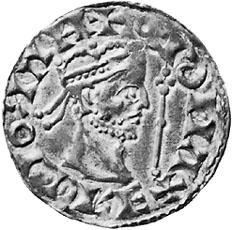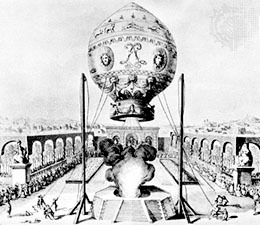Deaths
which occurred on a January 06:
2004 Four
adults and eight children aged 7 to 15, in Kandahar, Afghanistan,
by the explosion of a terrorist bomb attached to a bicycle. One of the adults
killed is the driver of a truck that was passing by. 58 persons are injured,
most of them children who had just come out of school; some of them were
playing in a vacant lot. The explosion occurs as people come to the aid
of the one child injured by a smaller explosion a few minutes earlier.
2003 Albert
Schussler, 85, in a coma after a stroke the previous day. He
was to go on trial on 27 January 2003. He worked for 30 years as a New York
City assessor before retiring in 1967 and becoming a tax consultant. According
to prosecutors, he immediately organized a bribery operation, starting with
a friend still working in the assessor's office. It eventually involved
15 of the 38 city assessors in Manhattan, who took $10 million in bribes
to lower assessments for hundreds of properties.
2003 Zhang
Minmin, 53, Chinese woman, from injuries sustained from a suicide
bombing in Tel Aviv the previous day.
2002 Dr. Burton I. Edelson,
75, by heart attack, a US leader in satellite communications who helped
start and oversee some of NASA's most popular science programs.
2002
Catterina Ghigliazza, Italian born on 28 November 1891.
2000 Malcolm Rent Johnson, executed
for a crime he may not have committed
Johnson,
who had served time for two previous rapes, was convicted in 1982
of rape and murder, but insisted that he was innocent. At Johnson's
trial, police chemist Joyce Gilchrist testified that six samples taken
from the murder victim's bedroom showed semen consistent with his
blood type.
Ura Alma Thompson,
76, was found suffocated in her apartment on 27 October 1981. There
were no witnesses to the crime, and no fingerprints matching Johnson's
were found. He was arrested after officers went to his home to question
him about an unrelated parole violation and noticed items belonging
to the victim. A search led to the discovery of her apartment key
in his nightstand. He contended all the items were given to him by
a third party.
Gilchrist told
jurors that semen stains on the woman's bedspread and pillow case
matched Johnson's blood type, which constituted the bulk of evidence
used to tie Johnson to rape. The only other evidence stained by semen
consistent with his blood type was a knee-high stocking, Gilchrist
testified. That stocking has not been retested. A vaginal swab contained
sperm, but not enough to test, Gilchrist told jurors. Gilchrist also
testified that hair fragments matched Johnson's hair and that fibers
matched a blue cotton shirt he owned. Johnson's trial was the first
at which she had testified about fiber analysis. DNA analysis was
not available at that time, and the court denied the defense's request
for funds to hire its own forensics expert. Johnson's attorney argued
during trial that blue cotton shirts were so ubiquitious that the
fiber could not definitively be linked to Johnson.
But
a 30 July 2001 re-examination of the slides which Gilchrist had claimed
were incriminating, showed that "spermatozoa are not present," says
a 31 July 2001 memo signed by chemist Laura Schile. Schile resigned
on 02 August 2001 from the Oklahoma City Police Department forensics
lab, citing a hostile work environment. She names the lab's three
other scientists as agreeing that sperm is not present.
While the memo does not exonerate Johnson, it is the first time legal
that questions have been raised about Gilchrist's testimony in an
execution case. The memo also noted that Gilchrist's testimony had
been criticized previously. Two appellate courts have ruled that Gilchrist
gave false testimony about semen evidence in the 1992 rape and murder
trial of Alfred Brian Mitchell, whose death sentence was overturned
earlier in August 2001 because of what one court called her "untrue"
testimony. The FBI, upon reviewing eight of Gilchrist's cases, concluded
that she had misidentified evidence or made other serious mistakes
in six of them.
Prosecutors said
that there was sufficient evidence separate from Gilchrist's testimony
to convict Johnson. But Oklahoma County Chief Public Defender Robert
Ravitz, who represented Johnson at trial, disagrees.
Problems
with Gilchrist's testimony in other cases have led to the release
of three inmates who served long sentences, including one on death
row. Based on a preliminary review, authorities previously said that
there was no taint in the 11 cases where prisoners were put to death.
According to a survey by Amnesty International, Oklahoma has more
executions per capita than any state in the US. |
1995 Joe Slovo, 58, Latvian / South African attorney/Secretary-General
(SACR)
1994 Tip O'Neill speaker of the US House
of Representatives, of cancer
1994 Morty the Moose,
6, (Northern Exposure)
1993 Rudolph Nureyev, 54,
Russian ballet dancer (Kirov), of AIDS
1992 Vincent Placoly,
45, Martinique writer (Une journée torride)
1992 Naint Ahmer,
a Christian teacher, is martyred in Pakistan. His killers claim he insulted
Muhammed.
1985 Robert H W Welch Jr, 85, US founder/leader
John Birch Society
1981 A[rchibald] J[oseph] Cronin,
84, physician/author (Citadel), dies at 84
1978 John D MacArthur,
80, US insurance billionaire
1976 Oscar Esplá, 89,
Spanish philosopher/composer (Sonata del Sur)
1974 David Alfaro Siqueiros, Mexican Social
Realist muralist, painter, born on 29 December 1896. —
MORE
ON SIQUEIROS AT ART “4” JANUARY
with links to images.
1969:: 9 of the 25 passengers
and 2 of the 3 crew members aboard Allegheny
Airlines Flight 737, a Convair
CV-580, which, coming in too low, clips treetops 9 km short of the Bradford,
Pennsylvania, airport and cuts a swath through trees bordering a fairway
of the Pine Acres Golf Course. The plane comes to rest inverted, at 20:35.
1969:: 55 persons as a Continental
Air Services Douglas
DC-3 crashes in northeast Thailand.
1964 Edgar Maass,
67, German/US author (Verdun)
1961 Alfrewd Aaron Wolmark,
Polish British artist born on 28 December 1877.
1961 Regina
Ullmann, 76, writer.
1960:: 34 persons in crash
of a National Airlines DC-6B airplane, due to a bomb.
1956.
Nate Saint, Ed McCulley, Jim Elliot, Roger Youderan, Pete Fleming.
Missionaries, they were trying to make contact with the Auca Indians in
the remote jungle of Ecuador. These ambush and kill them.
1953 Vacca,
mathematician.
1952 Charles Isaac Ginner,
French British artist born on 04 March 1878.
1941 Franz
Hessel, 60, writer
1935 George P Baker,
68, US playwright (Dramatic Technique)
1930 Study,
mathematician.
1922 Rosanes,
mathematician.
1921 Alexander Whyte, who was influential
in the Free Church of Scotland and wrote admired books.
1920 Zeuthen,
mathematician
1919 Theodore Roosevelt, 60,
26th US President (1901-09), at Sagamore Hill, his
estate overlooking the New York's Long Island Sound.
Born
on 27 October 1858, Theodore
Roosevelt became a dynamic and energetic politician and is credited
with creating the modern presidency. As a young Republican, Roosevelt
held a number of political posts in New York in the 1880s and 1890s,
and was a leader of reform Republicans in the state. In 1898, as assistant
secretary to the US Navy, Roosevelt vehemently advocated war with
Spain. When the Spanish-American War began, he formed the "Rough Riders,"
a volunteer cavalry that became famous for its contribution to the
US victory at the Battle of San Juan Heights in Cuba. The publicity-minded
Roosevelt rode his military fame to the New York governor's seat in
1898, and to the vice-presidency in 1900. In 1901, President William
McKinley was assassinated and Roosevelt, forty-three years old, became
the youngest president ever to assume the office to that day. He stamped
the presidency with a vitality that delighted most Americans, and
was elected to a second term in 1904. As an American expansionist,
Roosevelt asserted his executive powers to defend US interests throughout
the Americas as he sought to balance the interests of farmers, workers,
and the business class at home. He insisted on a strong navy, encouraged
the independence of Panama and the construction of the Panama Canal,
promoted the regulation of trusts and monopolies, set aside America's
first national parks and monuments, and introduced the "Square Deal"
policy for social reform. In 1906, he was awarded the Nobel Peace
Prize for his mediation in the negotiations to end the Russo-Japanese
War. In 1912, three-and-a-half years after finishing his second term,
Roosevelt ran for president again as the Progressive Party candidate,
but was defeated by Democrat Woodrow Wilson. In the last few years
of his life, Roosevelt became a vocal advocate of the US entrance
into World War I, but after the war was an opponent of the postwar
League of Nations, originally conceived of by President Wilson. In
1919, Roosevelt died at his home in New York.
— NY
Times obituary
— He was also an author. THEODORE ROOSEVELT
ONLINE:
A Book-Lover's
Holidays in the Open
History
as Literature, and Other Essays
Hunting
Trips of a Ranchman
New York:
A Sketch of the City's Social, Political, and Commercial Progress
from the First Dutch Settlement to Recent Times (1906)
Ranch
Life and the Hunting-Trail (illustrated by Frederic
Remington)
Ranch Life and the Hunting-Trail
The Rough
Riders
The Strenuous
Life: Essays and Addresses
Theodore
Roosevelt: An Autobiography
Through
the Brazilian Wilderness (1914)
co-author of
Hero Tales From American History |
1918 Georg
F. L. P. Cantor, 72, mathematician. In his doctoral examination,
he maintained that “In mathematics the art of proposing a question
must be held of higher value than solving it.” [perhaps true not
only in mathematics]
1900 Boers attack at
Ladysmith, about 1000 killed or injured
1886 Saint-Venant,
mathematician.
1885 Peter C Asbjørnsen, 72, Norwegian
fairy tale writer.
1885 Emily (Coppin) Stannard,
British artist born in 1803.
1866 Paul Emil Jacobs,
Danish artist born on 18 August 1802.
1840 Charles Town,
British artist born in 1763.
1826 John
Farey, mathematician.
1821 Charles François
Nivard, French artist born on 22 April 1739. — {Je ne trouve
Nivard ni Vard dans l'internet.}
1750 Georg Liszewski,
Polish artist born in 1674.
1616 (or 04 March 1615?) Hans von
Aachen, German Mannerist painter and draftsman, active also in
Italy and Bohemia, born in 1552. — MORE
ON VON AACHEN AT ART “4” JANUARY
with links to images.
1607 Monte,
mathematician.
1541 Bernaert van Orley, Brussels Flemish
painter and tapestry designer born in 1488 — MORE
ON VAN ORLEY AT ART “4” JANUARY
with links to images.
1504 Pedro Berruguete,
Spanish painter born in 1450— MORE
ON BERRUGUETE AT ART “4” JANUARY
with links to images. |
 1066
Harold Godwinson crowned King of England [silver
penny]
1066
Harold Godwinson crowned King of England [silver
penny]  1745
Jacques-Étienne Montgolfier.
1745
Jacques-Étienne Montgolfier.